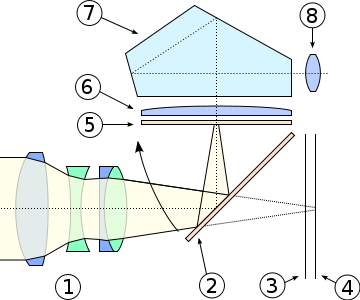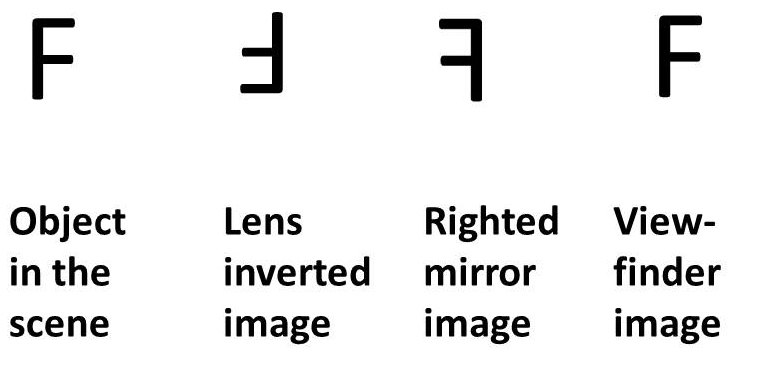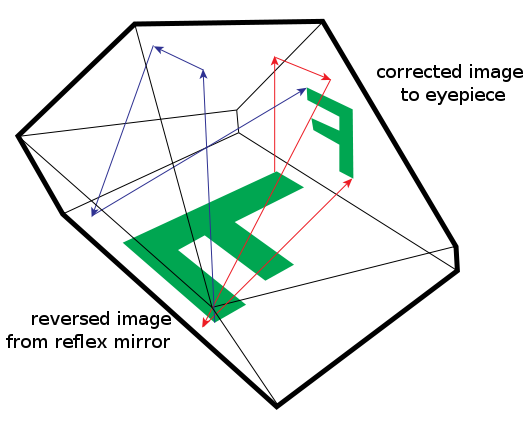
Figure 1 – Cross-section view of SLR system: 1: Front-mount lens (four-element Tessar design) 2: Reflex mirror at 45-degree angle 3: Focal plane shutter 4: Film or sensor 5: Focusing screen 6: Condenser lens 7: Optical glass pentaprism (or pentamirror) 8: Eyepiece (can have diopter correction ability). From the Wikipedia and created by CBurnett, in the public domain under creative commons attribution license.
I’d like to return today to our technical discussion of camera optics. We have looked at what mirrors do to light and at what lens do to light. Based on what we learned so far take a look at Figure 1 which shows the innards of a single lens reflex or SLR camera. The first object that we see is the lens. The lens is actually a composite of multiple lenses. However, we know that the lens is going to invert the object on the sensor or film. Up and down is flipped, and so is right and left. Look at Figure 2. If the object was the letter F (Today’s blog is brought to you by the letter F) then what appears on the sensor or film is the “lens inverted image.” This is what you see in a large format camera on the ground glass.

Figure 2 – Image inversions in a modern SLR camera. Image may be used under Creative Commons Attribution license.
It is also all that you need to make a camera if it is to be purely digital. This is because in a digital camera you can make all the corrections that you need computationally. You display and store the file with all the corrections made.
The In the next generation of camera, makers decided that this inversion needed to be fixed. By putting a mirror into the camera at a right angle they could create a “righted mirror image” where up and down were fixed but right and left were still flipped. You can do this with a single lens, in which case the lens needed to be flipped out of the way when the picture was taken. A second approach was the twin lens reflex, which had two identical lens: one for the picture and one for the viewfinder. This is, of course, a bit costly and also introduces what are called parallax effects as the object gets closer and closer to the image.
To create the right side up image of the modern SLR viewfinder, makers use a pentaprism, which is actually a set of reflective (like a mirror) surfaces that multiply flip the image until it is corrected and do this in a fairly confined space. For illustrative purposes you can follow the multiple reflections of the blue and red rays in Figure 3 to convince yourself that geometric points wind up where they need to be. This is shown in Figure 1 and in more detail in Figure 3. Again with the modern SLR it is necessary to flip the mirror out of the way during the exposure. This can be done either automatically or manually before exposure if you are afraid of vibrations affecting your image.

Figure 3 – Schematic showing operation of a pentaprism in a modern SLR camera. Image from the Wikipedia created by Paul1513 and put in the public domain under creative commons attribution license.
